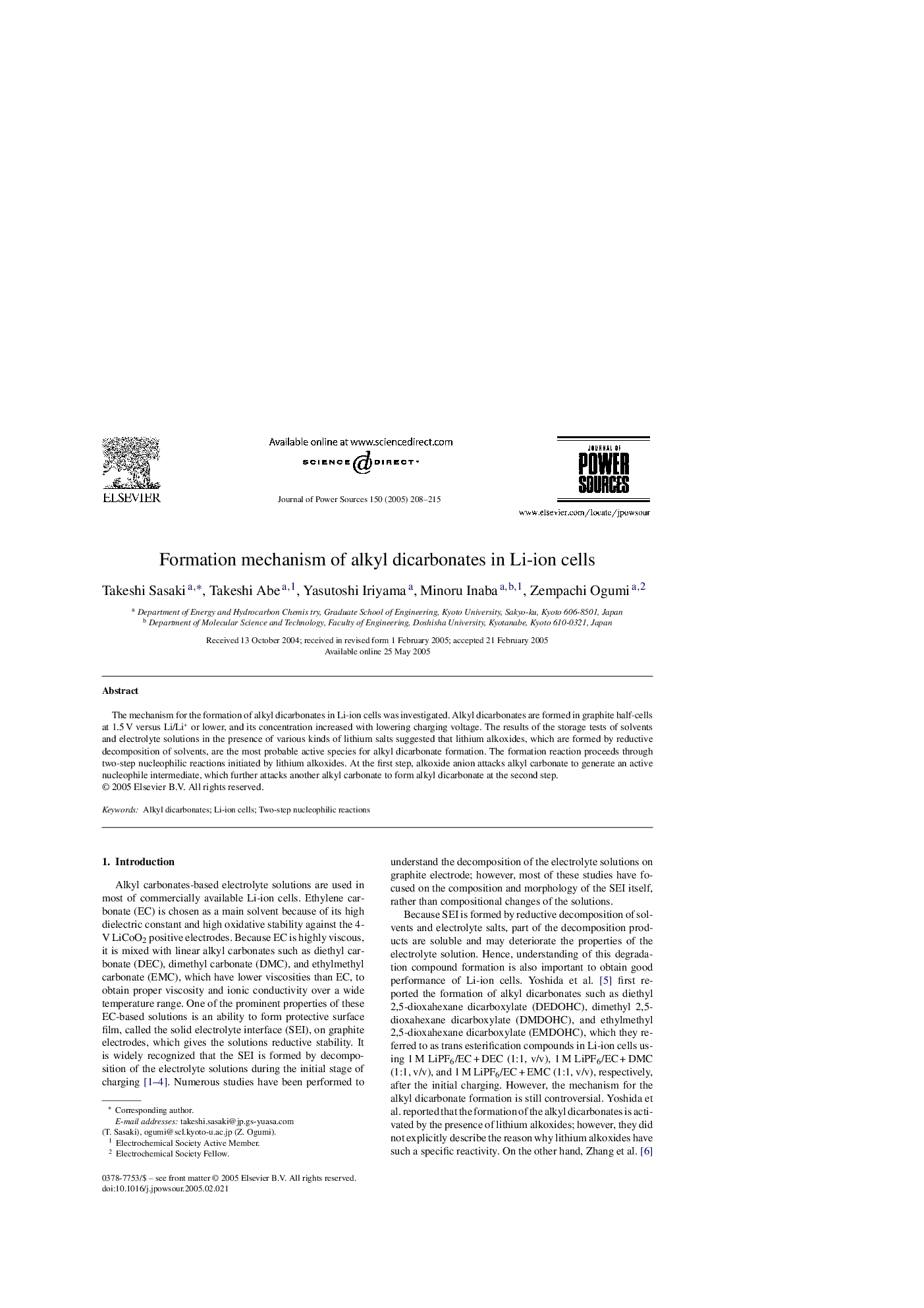| Article ID | Journal | Published Year | Pages | File Type |
|---|---|---|---|---|
| 9760185 | Journal of Power Sources | 2005 | 8 Pages |
Abstract
The mechanism for the formation of alkyl dicarbonates in Li-ion cells was investigated. Alkyl dicarbonates are formed in graphite half-cells at 1.5Â V versus Li/Li+ or lower, and its concentration increased with lowering charging voltage. The results of the storage tests of solvents and electrolyte solutions in the presence of various kinds of lithium salts suggested that lithium alkoxides, which are formed by reductive decomposition of solvents, are the most probable active species for alkyl dicarbonate formation. The formation reaction proceeds through two-step nucleophilic reactions initiated by lithium alkoxides. At the first step, alkoxide anion attacks alkyl carbonate to generate an active nucleophile intermediate, which further attacks another alkyl carbonate to form alkyl dicarbonate at the second step.
Keywords
Related Topics
Physical Sciences and Engineering
Chemistry
Electrochemistry
Authors
Takeshi Sasaki, Takeshi Abe, Yasutoshi Iriyama, Minoru Inaba, Zempachi Ogumi,
